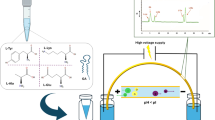Abstract
Dried blood spots are increasingly being used in drug development. This commentary considers the pharmacokinetic issues that arise and compares these with those attached to plasma, the mainstay matrix. A common implicit use of these matrices is as a surrogate for plasma water, and to this extent, the critical assumption made is constancy in fraction unbound for plasma and, additionally for blood, constancy of hematocrit and blood cell affinity of compound. Often, these assumptions are reasonable and either matrix suffices, but not always. Then the value of one over the other matrix depends on the magnitude of the blood-to-plasma concentration ratio of drug, its clearance, and the cause of the deviation from constancy. Additional considerations are the kinetics of distribution within blood and those arising when the objective is assessment or comparison of bioavailability. Most of these issues can be explored and addressed in vitro prior to the main drug development program.

Similar content being viewed by others
References
ter Heine R, Rosing H, van Gorp ECM, Mulder JW, Beijnen JH, Huitema ADR. Quantification of etravirine (TMC125) in plasma, dried blood spots and peripheral blood mononuclear cell lysate by liquid chromatography tandem mass spectrometry. J Pharm Biomed Anal. 2009;49:393–400.
Barfield M, Spooner N, Lad R, Parry S, Fowles S. Application of dried blood spots combined with HPLC-MS/MS for the quantification of acetaminophen in toxicokinetic studies. J Chromatograph B. 2008;870:32–7.
Li W, Tse FLS. Dried blood spot sampling in combination with LC-MS/MS for quantitative analysis of small molecules. Biomed Chromatog. 2010;24:49–65.
van der Heijden J, de Beer Y, Hoogtanders K, Christiaans M, de Jong GJ, Neef C et al. Therapeutic drug monitoring of everolimus using the dried blood spot methd in combination with liquid chromatography–mass spectrometry. J Pharm Biomed Anal. 2009;50:664–70.
Liang X, Li Y, Barfield M, Ji QC. Study of dried blood spots techniques for the determination of dextromethorphan and its metabolite dextrorphan in human whole blood by LC-MS/MS. J Chromatograph B. 2009;877:799–806.
Guthrue R, Suzi A. A simple phenylalanine method for detecting phenylketouria in large populations of newborn infants. Pediatrics. 1963;23:338–43.
Spooner N, Lad R, Barfield M. Dried blood spots as a sample collection technique for the determination of pharmacokinetics in clinical studies: considerations for the validation of a quantitative bioanalytical method. Anal Chem. 2009;81:1557–63.
Beaudette P, Bateman KP. Discovery stage pharmacokinetics using dried blood spots. J Chromatograph B. 2004;809:153–8.
Edelbroeck PM, van der Heijden J, Stolk LML. Dried blood spot methods in therapeutic drug monitoring: methods, assays and pitfalls. Ther Drug Monit. 2009;31:327–36.
Holub M, Tuschl K, Ratschmann R, Strnadová KA, Muhl A, Heinze G et al. Influence of hematocrit and localization of punch in dried blood spots on levels of amino acids and acylcarnitines measured by tandem mass spectrometry. Clin Chim Acta. 2006;373:27–31.
Mei JV, Alexander JR, Adam BW, Hannon WH. Use of filter paper for the collection and analysis of human whole blood specimens. J Nutrition. 2001;131:1631S–6.
Damen CWN, Rosing H, Schellens JHM, Biejnen JH. Application of dried blood spots combined with high-performance liquid chromatography coupled with electrospray ionisation tandem mass spectrometry for simultaneous quantification of vincristine and actinomycin-D. Anal Bioanal Chem. 2009;394:1171–82.
McDade TW, Williams S, Snodgrass JJ. What a drop can do: dried blood spots as a minimally invasive method for integrating biomarkers into population-based research. Demography. 2007;44:899–925.
Déglon J, Thomas A, Cataldo A, Mangin P, Staub C. On-line desorption of dried blood spot: a novel approach for the direct LC/MS analysis of µ-whole blood samples. J Pharm Biomed Anal. 2009;49:1034–9.
Rowland M, Tozer TN. Clinical pharmacokinetics: concepts and applications. 4th ed. Baltimore: Lippincott, Williams & Wilkins; 2010. p. 157–68.
Rowland M. Influence of route of administration on drug availability. J Pharm Sci. 1972;61:70–4.
Rodgers T, Rowland M. Mechanistic approaches to volume of distribution predictions: understanding the processes. Pharm Res. 2007;24:918–33.
Tozer TN. Implications of altered plasma protein binding in disease states. In: Benet LZ, Massoud N, Gambertoglio JG, editors. Pharmacokinetic basis of drug treatment. New York: Raven Press; 1983. p. 173–93.
Rodgers T, Leahy D, Rowland M. Physiologically-based pharmacokinetic modeling 1: predicting the tissue distribution of moderate-to-strong bases. J Pharm Sci. 2005;94:1259–76.
Kawai R, Matthew D, Tanaka C, Rowland M. Physiologically-based pharmacokinetics of cyclosporine A: extension to tissue distribution kinetics in rats and scale-up to human. J Pharmacol Expt Therap. 1998;287:457–68.
Piekoszewski W, Jusko J. Plasma protein binding of tacrolimus in humans. J Pharm Sci. 1992;82:340–1.
Akbas SH, Ozdem S, Caglar S, Tuncer M, Gurkan A, Yucetin L et al. Effects of some hematological parameters on whole blood tacrolimus concentration measured by two immunoassay-based analytical methods. Clin Biochem. 2005;38:552–7.
Hoogtanders K, van der Heijden J, Christiaans M, Edelbroeck P, van Hoof JP, Stolk LML. Therapeutic drug monitoring of tacrolimus with the dried blood spot method. J Pharm Biomed Anal. 2007;44:658–64.
Mee AV, Wong PY, Sun C, Oei L, Elliott S, Naik N et al. Monitoring of cyclosporine concentrations by using dry blood-spot samples. J Clin Lab Analysis. 1991;5:74–7.
Kawai R, Lemaire M, Steimer J-L, Bruelisauer A, Niederberger W, Rowland M. Physiologically-based pharmacokinetic study on a cyclosporin derivative, SDZ IMM 125. J Pharmacokin Pharmacodyn. 1994;22:327–65.
Fleuren HLJ, van Rossum M. Nonlinear relationship between plasma and red blood cell pharmacokinetics of chlorthalidone in man. J Pharmacokin Pharmacodyn. 1977;5:359–75.
Legg B, Rowland M. Saturable binding of cyclosporin A to erythrocytes: estimation of binding parameters in renal transplant patients and implications for bioavailability assessment. Pharm Res. 1988;5:80–5.
Author information
Authors and Affiliations
Corresponding author
Rights and permissions
About this article
Cite this article
Rowland, M., Emmons, G.T. Use of Dried Blood Spots in Drug Development: Pharmacokinetic Considerations. AAPS J 12, 290–293 (2010). https://doi.org/10.1208/s12248-010-9188-y
Received:
Accepted:
Published:
Issue Date:
DOI: https://doi.org/10.1208/s12248-010-9188-y




